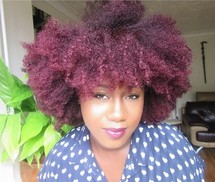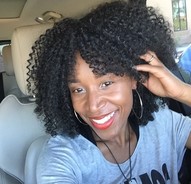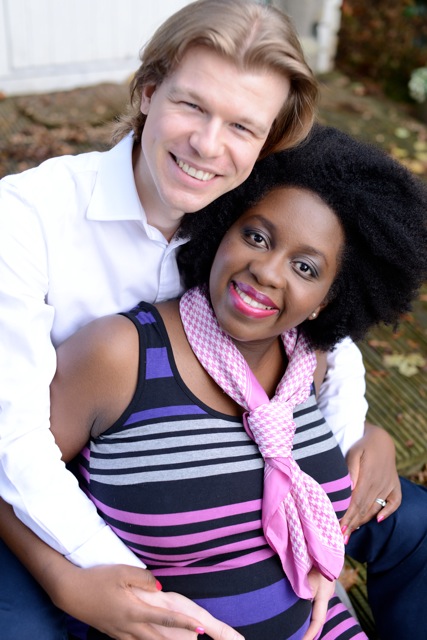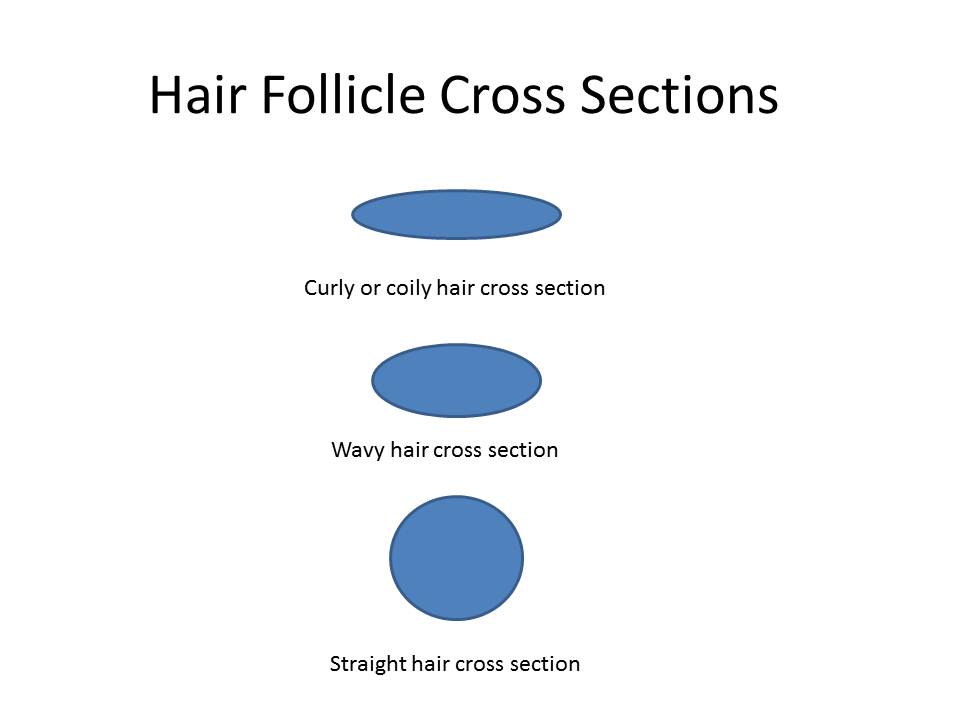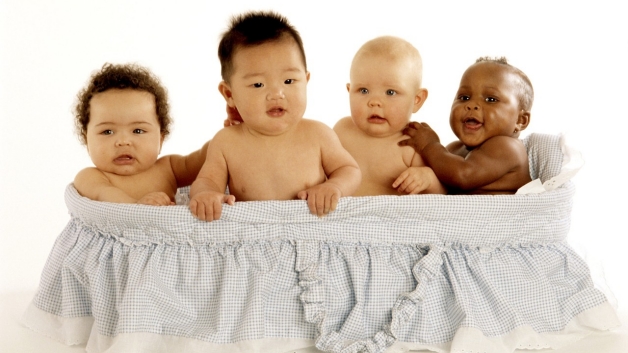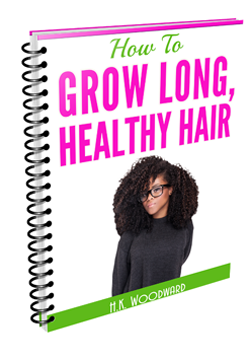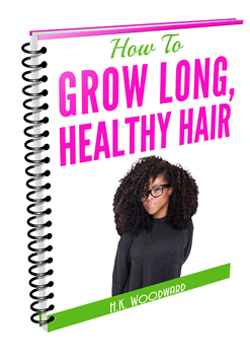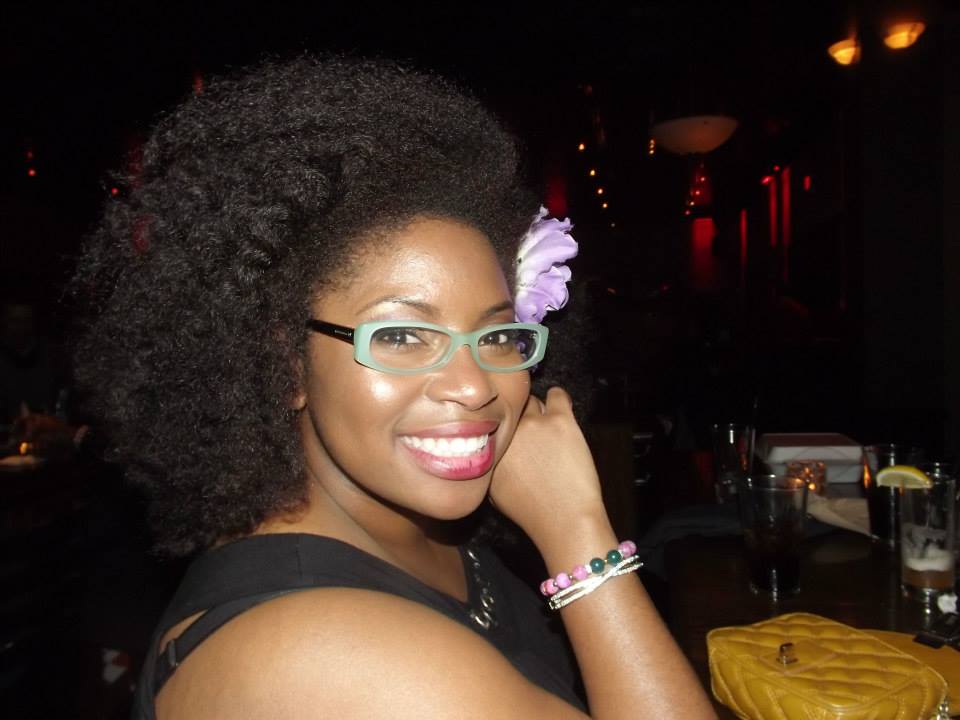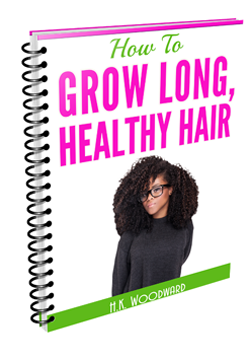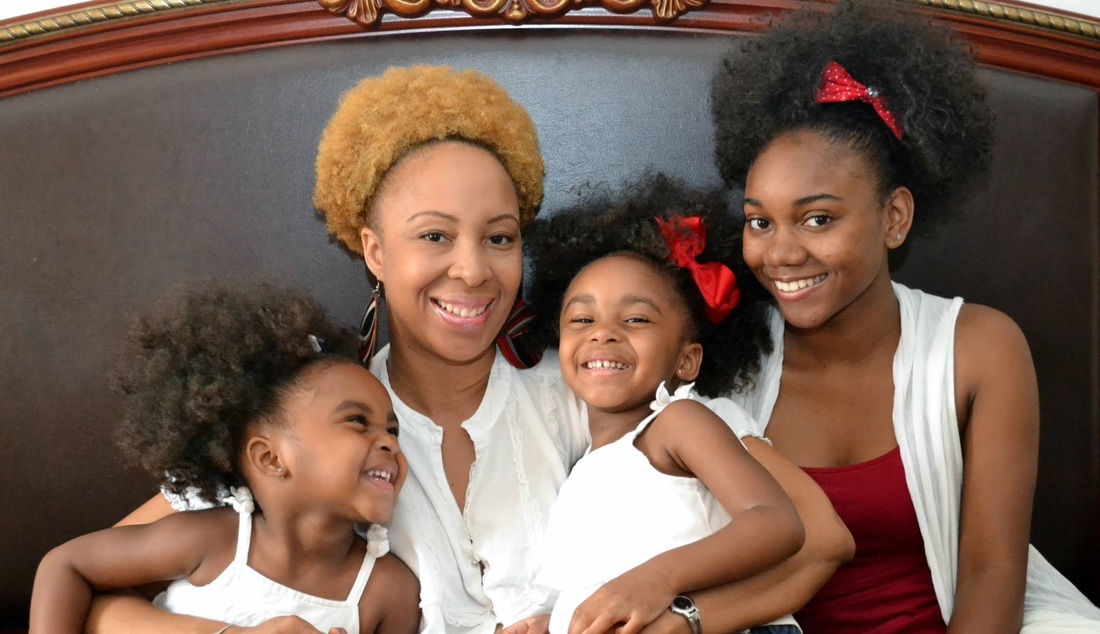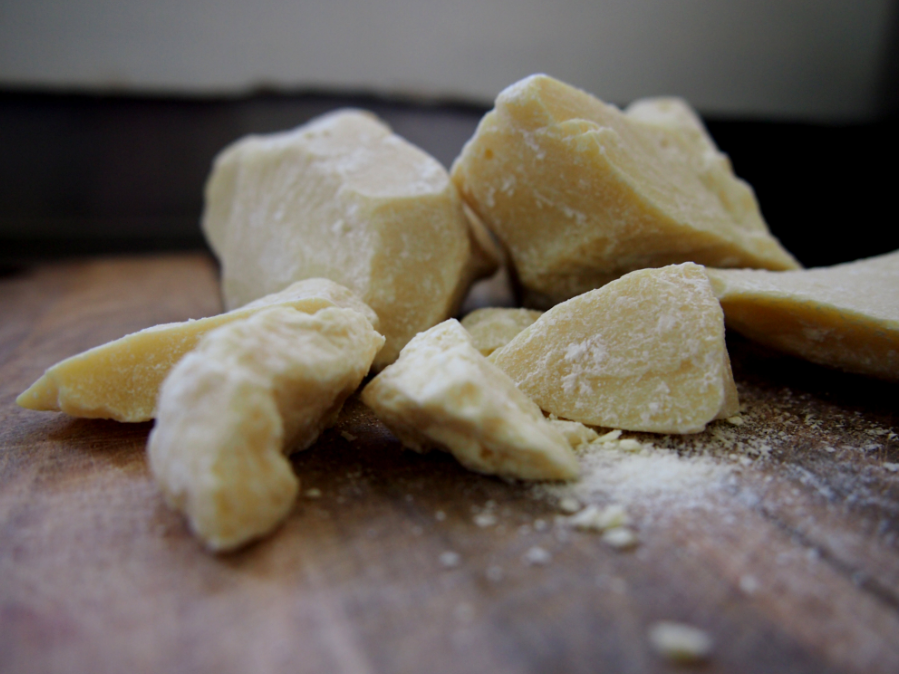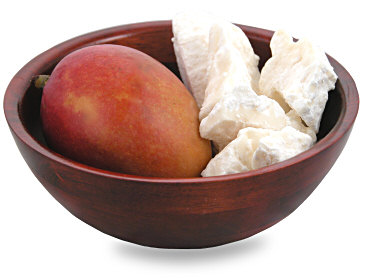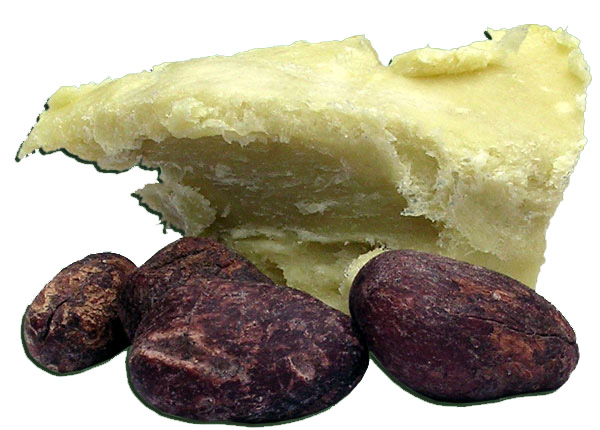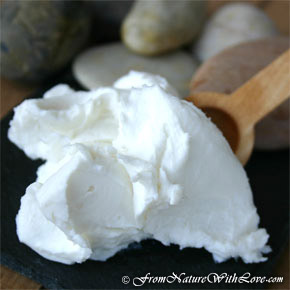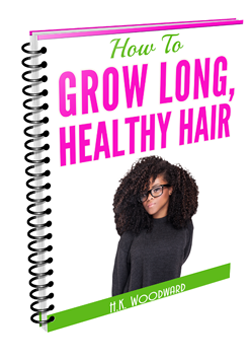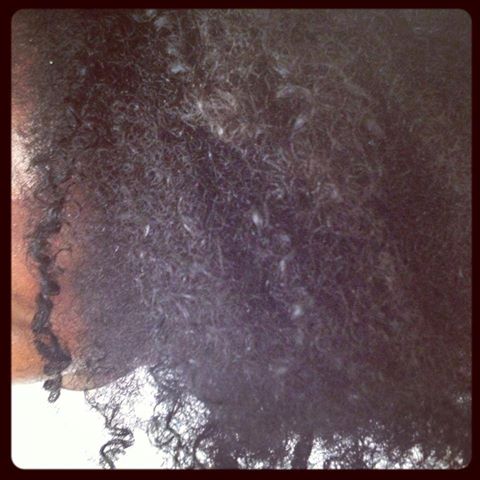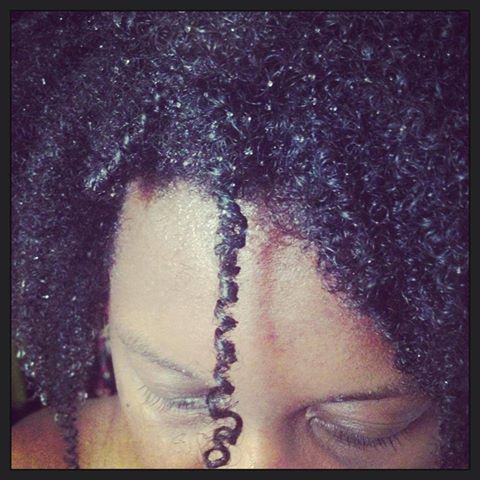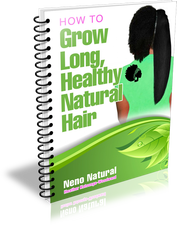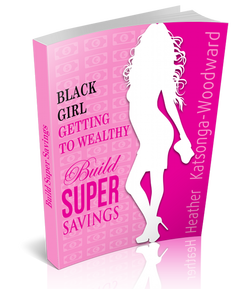|
One of the most annoying questions I was ever asked was "Why do you (i.e. black people) need to have different products anyway? Why can't everyone just use the same products?" - what was annoying wasn't the questions itself but the fact that the person didn't even let me answer. They just continued talking and every time I interjected with "Can I answer your question?" They just talked over me and ignored me. I was still annoyed about 2 months after the incident! I know, that's ridiculous - other people's stupidity should never impact one's emotions like that.
Anyhow, if you cut through the hair strand of someone with naturally straight hair you would find that the cross-section is round. Curly hair on the other hand has a flattened oval or elliptical cross section, this however is only one difference. It is the feature that gives our hair it's very curly shape. In addition, African/African-American hair:
The fewer the number of layer the more chemicals can be used to change the hair - so a person with a 7-layer cuticle will take chemicals more easily than a person with an 11-layer cuticle; remember those people who complain that their hair just doesn't take relaxer? They probably have a thicker cuticle layer. That said, flatter (elliptical) hair strands are easier to treat with chemicals so black hair may ultimately be easier to chemically manipulate. In summary, besides the curl that you see, different hair types have varied structural and chemical features that impact how products work with the hair. This is why different hair types needs slightly different products.
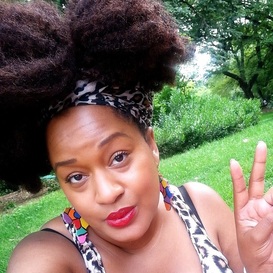 Check out Queen Carmen's Hair Journey & Regimen Check out Queen Carmen's Hair Journey & Regimen
I have been asked this question a few times so I thought it’s high time I gave a proper explanation. What makes one product really cheap and another one more expensive?
Product Price and Product Quality Yes, there is definitely a correlation between the quality of a product and the price but it isn’t a perfect relationship – something that costs £20 isn’t necessarily two times better than a £10 product. That said, some products are cheap for a reason: they use cheap quality ingredients that neither nourish your hair nor your body. Case in point, I was in a Poundland (think, The Dollar Store) – basically as budget as it gets and I saw a 250ml product of “Body Butter” – I couldn’t believe it. There is no way you can produce a body butter that cheaply no matter what your volumes are. So I picked up the bottle to read the ingredients and true to form there was only one vegetable butter on the list and it was very far down the list of ingredients suggesting there wasn’t much of it in there. Ultimately the product was called a butter because they had created a buttery texture but most of it was water and factory made ingredients. Now, there is nothing inherently wrong with most factory ingredients and anything that comes in a can or bottle even Mayo and beans has to contain some form preservation; however, having too much of them reduces the benefits to hair (and skin) compared to a product that use a healthy balance of both farmed and manufactured inputs. A balance needs to be achieved between hair benefits and prolonged shelf life. Sometimes A Cheap Price Hides Another Story Another case in point: I bought a bottle of “Pure Jojoba” because the price was uniquely low; it was too good to be true, I just had to have it. When I got home I thought the product smelt a little “off”. A look at the ingredients list confirmed it wasn’t jojoba but a jojoba and grapeseed oil blend – the product label was lying on the front, calling itself “Pure Jojoba” when it wasn’t! Grapeseed oil is a good oil but it is cheaper than jojoba and has different benefits. I wanted jojoba for the unique benefits that it offers so I was annoyed and disappointed. The price was too good to be true for a reason. Product Price & Unique Ingredients When it comes to product making the more unique the ingredients you use the more expensive the product will be. Shampoo is a good example here. 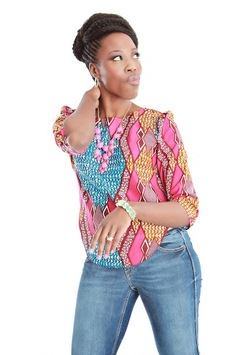 Check out Queen Christine's Hair Journey & Regimen Check out Queen Christine's Hair Journey & Regimen
Because sulfates were so widely used in shampoo (and they still are) using them as a cleanser is really brings down the cost of making a shampoo. Once consumers switched on to the fact that sulfates were too strong a cleanser for dry hair types and possibly had other negative effects some businesses decide to use alternative cleansers.
Using a cleanser other than a sulfate pushes the price up. Some alternative cleansers, e.g. cocamidopropyl betaine, have grown in usage so they are more widely available and therefore more affordable to use as a product ingredient. That said, milder cleansers are still being developed. Choosing to use a non-mainstream ingredient to improve product quality hikes the product price right up. How The Big Dogs Keep Prices Low There are three ways that big manufacturers keep prices down:
Product Price and Experience Some companies want to provide more than just a product to a customer. They want to provide a great experience, great customer service and a fabulous customer relationship. To provide this extra service their product will cost more.  Check out Queen Gloria's Hair Journey & Regimen Check out Queen Gloria's Hair Journey & Regimen
Product Price and Status
Last but certainly not least, some customers want to buy products to show their status a little or to feel different to the masses. If you feel you work harder than most people then you want products most people cannot afford. You want a branded hair or body product that shows you care about quality. You don’t want “good enough” products, you want “best in category” products. Have you ever had a friend who goes from being on your level and all of a sudden they get a job paying them triple? They get a new place to live and when you go over to the house warming party everything in their place tells you upfront, I’m on another level now. Even the hand wash in the bathroom is a superior and exclusive brand. You look on in admiration and just think, I need to work hard and get myself nice stuff like this. Premium products differentiate themselves by going above and beyond on product packaging as well as other small branding elements that the premium consumer cares about. It’s why you choose to buy a Mercedes Benz over a Toyota when they both do exactly the same thing. In summary, a product may be more expensive because:
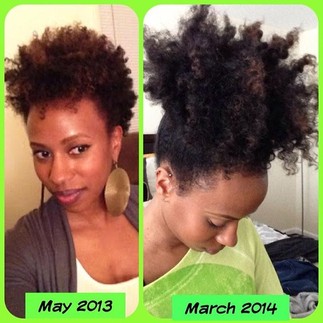 Click for Queen Markeeta's Regimen Click for Queen Markeeta's Regimen
This blog is more for mixtresses and those that are very interested in the structure of their leave-in conditioners.
Technically, a product has to contain cationic ingredients to be called a moisturizer (leave-in conditioner). Exactly the same ingredients go into a moisturizer as into a rinse-off conditioner. However, a lower concentration is used. When you are formulating a moisturizer the first thing you need to decide is which cationic quaternary compound you will use or whether you will combine them. The common options are:
When you are making your own moisturizer these are all the yummy ingredients you will want to include. You can use some or all of them depending on what you are trying to achieve:
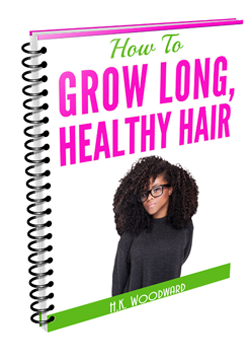
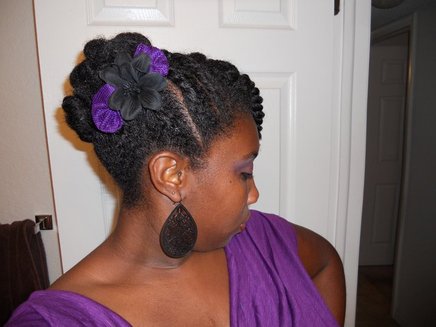 Click for Trenika's styles and regimen Click for Trenika's styles and regimen
Cetyl Alcohol is also known as Palmityl Alcohol.
Cetearyl alcohol is composed of cetyl alcohol and stearyl alcohol. All of them are fatty alcohols (and therefore oil soluble). They are a great addition to conditioners and leave-in conditioners/ moisturizers. The composition of cetearyl alcohol varies from supplier to supplier. It contains 30% or 50% or 70% cetyl alcohol and the rest is stearyl alcohol. Emulsifying & Thickening Cetyl alcohol is a thickening agent and emulsifier derived from vegetable oils, e.g. palm oil or coconut oil. Cetearyl alcohol emulsifies better than of cetyl alcohol. Keep in min the fact that, on their own, cetearyl alcohol and a cetyl alcohol do not actually bind oils to water, however, once this combination has been made they prevent the fused molecules from separating. Moisture & Conditioning Cetyl alcohol is oilier than most other alcohols giving it a moisturizing quality; this is why it is also used in conditioners. It can make hair feel thicker and softer. This moisturizing quality especially makes it useful in moisturizing shampoos. In conditioners, cetyl alcohol helps in producing a creamy texture that makes the conditioner easy to spread throughout hair. Both cetyl alcohol and ceteryl alcohol are also used in making lotions because they help to moisturize skin without creating a greasy film. In a conditioner, the scalp gets this benefit. Opacifier Cetyl alcohol is also used as an opacifier in shampoos, i.e. to make them opaque and as a foam boosting and foam stabilising agent. Detangling and slip Importantly for those of us with mega tangling issues cetyl alcohol and cetearyl alcohol help to reduce tangles by apparently 50% (source: SwiftCraftMonkey). They also make a conditioner more slippery. This is a very important quality for those with kinky-curly hair. I can never have too much slip. Finally, note that if you are using either BTMS-25 or BTMS-50 one of cetyl alchol or cetearyl alcohol is already in there but you can add some more.
I normally use BTMS-50 and have found that it plays much better with cetearyl alcohol than with cetyl alcohol. I get fewer separation when I cetearyl alcohol. As an additional advantage cetearyl alcohol is meant to be more emollient (i.e. softening) than cetyl alcohol. Usage rate: 3-5%; the more you use, the thicker your formulation. Add either cetyl alcohol or cetearyl alcohol at half the amount of the cationic compound, i.e. if you’re using 8% BTMS, add 4% of one of these fatty alcohols to get the benefits. Add it to the heated oil phase of a conditioner. Other Fatty Alcohols Other (less common) fatty alcohols you may want to look into include:
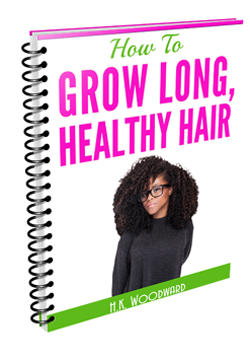
Cetrimonium chloride is a cationic quaternary compound like BTMS, incroquate CR and cetrimonium bromide. It is a water-soluble antistatic agent, surfactant and has some antimicrobial properties.
It performs a similar conditioning function to BTMS-50 and cetrimonium bromide but is not nearly as lubricating so it ideally should not be used on its own especially for dry hair types. You need to add either a humectant or a fatty alcohol to make it more conditioning.
That said, its detangling capabilities are superior to both BTMS and cetrimonium bromide. Importantly, it can be added to surfactant formulations because it is water-soluble where as BTMS-50 and cetab cannot. Cetac is a different compound to cetrimonium chloride. It is composed of:
If you have very fine, tangle-prone hair try formulating a conditioner with cetrimonium chloride on its own to see how it perform otherwise combine it with other ingredients to create a more complete conditioner, e.g. add cetyl alcohol or cetearyl alcohol or glycerin. Usage rate: 0.5% to 5% in rinse-off products; 2% can be optimal to get the detangling benefit. 2% will get rid of any silicone build-up in your hair. Check the Material Safety Data Sheet (MSDS). Usage rate in leave-on products can be as little as 0.25%, You can add cetrimonium chloride to any phase: heated oil phase, heated water phase or the cool-down phase. You may find your conditioner is less watery if you add it during the cool down phase. 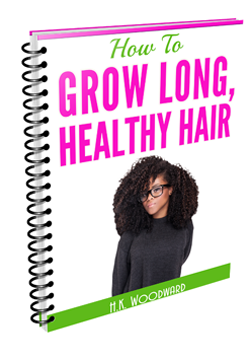
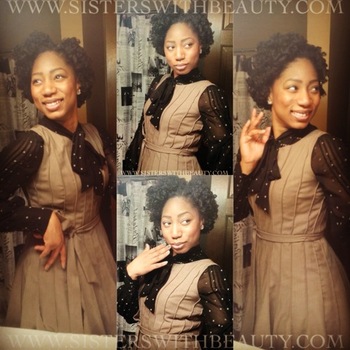 Click for Diana's regimen and styles! Click for Diana's regimen and styles!
Cetrimonium bromide is a cationic compound like BTMS, Incroquat CR and cetrimonium chloride. It is very commonly used as a base for commercial conditioners.
Cetab is a different compound to cetrimonium bromide. It is composed of:
BTMS is a more conditioning compound and a better detangler than cetrimonium bromide because it’s more strongly attracted to hair. However, cetab works better with damaged hair than BTMS because it can be adsorbed into the damaged areas of the cortex as it is smaller in size than BTMS. For a damaged hair conditioner consider using just cetrimonium bromide or cetab or BTMS plus cetab. Importantly, note that BTMS and cetab may not work well together, they may separate. If you are using cetrimonium bromide as your only cationic compound add oils and/or silicones and/or cetyl alcohol to improve the detangling properties of the conditioner. Properties of cetrimonium bromide include:
Usage rate: 0.5-10%; 5-7% is a good amount in a rinse off conditioner but use 2-3% if you are using it in combination with BTMS. Interestingly, some research suggests that cetrimonium Bromide could be used as an anticancer agent (Ito et al). Add it to the heated oil phase of a conditioner. 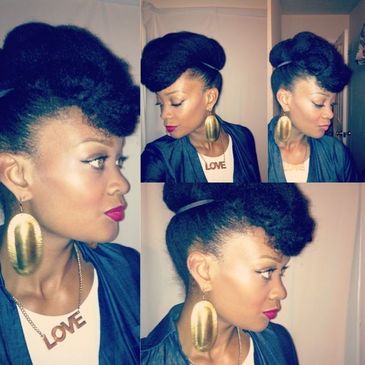 Click for Queen Deanna's Regimen Click for Queen Deanna's Regimen
BTMS is Behentrimonium Methosulfate (and) Cetearyl Alcohol. It is an emulsifying wax with some good detangling properties. Emulsify means it helps water and oil to mix. It emulsifies both oils and silicones very well and is a very commonly used ingredient in conditioners.
Its usage rate in hair products is normally 5 to 10%. Emulsifying wax is normally composed of a cetearyl alcohol or a cetyl alcohol. These are fatty alcohols derived by combining natural oils with fats. The fats are necessary to stabilize and thicken the desired formulation. You will come across two types of BTMS:
On their own cetearyl alcohol and a cetyl alcohol do not actually bind oils to water, however, once this combination has been made they prevent the fused molecules from separating. Both these fatty alcohols help to make combing easier. So if your hair is as tangle prone as mine this is an ingredient you definitely want to see on the bottle. Behentrimonium methosulfate is derived from rapeseed oil (it’s a cationic quaternary compound). BTMS-25 contains 25% behentrimonium methosulfate, the active ingredient in BTMS. BTMS-50 contains 50% behentrimonium methosulfate. BTMS-25 is a great conditioner, but it doesn't emulsify as well as BTMS-50. In addition, butylene glycol is a humectant so you especially want BTMS-50 in your conditioners if you have dry hair. If you have very greasy hair you might prefer BTMS-25. If you have dry hair but can’t find BTMS-50 you can just use the BTMS-25; the likelihood is that the other moisturizing ingredients in the recipe will makeup for it. Alternatively you can add a fatty alcohol, e.g. cetyl alcohol or cetearyl alcohol to make up for the lack of butylene glycol. If a recipe specifically lists BTMS-50 but you only have BTMS-25 double the amount of BTMS you put in to get the same amount of behentrimonium methosulfate, i.e. BTMS-50 = 2 x BTMS-25 Generally though, if you live in the West BTMS-25 and BTMS-50 are both very easy to find and best of all they are both easy to use. Add it to the heated oil phase of a conditioner. If you buy a conditioner it won't usually have BTMS-25 or -50 written on it, the specific ingredients are normally spelt out. 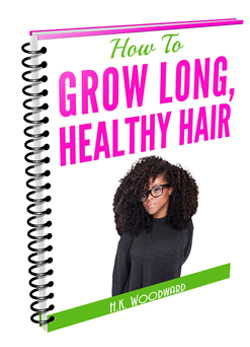
Incroquat CR is a cationic compound like BTMS, cetrimonium bromide and cetrimonium chloride. It is commonly used in conditioners. “Incroquat” is not a chemical’s name, it is a trademark of a company called Croda. CR stands for Crème Rinse. It is a combination of Cetearyl Alcohol (and) PEG-40 Castor Oil (and) Stearalkonium Chloride. Stearalkonium Chloride is 15% of Incroquat CR.
Its usage rate in hair products is normally 5 to 7%. It is good for softening and detangling hair so it’s a good addition to conditioners but it is not better than BTMS. It doesn’t have humectant properties so always add another ingredient to the conditioner for that function. Cetrimonium chloride is better at detangling so consider combining the two in your conditioner formulations to have a great detangler rather than just a good one. Note, however, that although incroquat CR is supposed to be an emulsifier it’s not a particularly effective one when used on its own; therefore, if you use it in recipes with a lot of silicones and oils the product will probably separate unless there is another emulsifier there. I would not recommend using incroquat CR as a conditioning agent on its own if you have dry hair like me. It needs to be combined with another cationic compound. Add it to the heated oil phase of a conditioner. 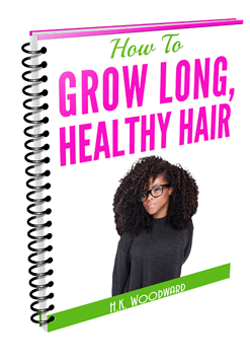
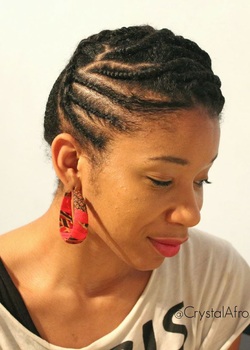 Blogger: @CrystalAfro Blogger: @CrystalAfro
The first consideration in creating a shampoo is how effective a cleanser you want your shampoo to be. This will depend on the type, combination and concentration of surfactants. Surfactants can make up to 50% of a shampoo.
I think 50% is way too much even for straight hair, I have made shampoos with 25% mild surfactants (i.e. with no sulfates) and found them too cleansing. If you’re designing a daily use shampoo then you need fewer surfactants (8% to 15%) than if you are creating one for weekly or twice-weekly use (15% to 50%). For kinky or curly hair care you’ll probably want to design a shampoo that will be used once or twice a week at the most. Foam Power This is going to surprise you: More foam doesn’t mean higher cleaning power so you can increase the foaming ability of a shampoo – which people like, without making it any stronger. What are the most crucial ingredients in a shampoo?
EVERYTHING ELSE is optional so if you don’t like or don’t want certain ingredients you can swap them out or remove them but if you do remove them make sure you add more water to maintain the surfactant usage rate. Importantly don’t just swap out 1% of one preservative with 1% of another as they may have different usage rates – check the usage rate and make necessary changes elsewhere in the recipe. Secondary properties Other ingredients in your shampoo will target all the other characteristics you want your shampoo to have:
Achieving your ideal viscosity (Advanced Shampoo Recipes) Different blends of surfactant produce varying degrees of runniness or viscosity. To thicken my shampoos I started of by using a gel formed using xanthan gum. However, I decided it was too much work so I imported liquid crothix from the US as I had heard good things about it. It is indeed much less stress. If you do use gel you would need to mix 1 to 3% of the gelling agent with water. If 1% isn’t enough bring it up to 2% then 3%. Too little is better than too much. Note that in addition to thickening a shampoo with gel you can thicken by: Increasing the concentration of surfactants – but this could make your shampoo more irritating and probably more drying to hair. Adding salts – but this may make your formulation cloudy; in addition, too much salt makes the mixture runny again so you really need to know what you’re doing. I would rather not use salt for fear it may hurt my eyes. Adding fatty material, e.g. liquid Crothix, PEG-150 distearate or thickening esters – but again, some fatty materials could make your formulation cloudy and they may interact with your fragrance to change the viscosity so you need to manage that balance. Adding color to a shampoo (Advanced Shampoo Recipes) If you want to change the color of one of the advanced recipes try mica pigment powder. It is skin safe and it also doesn’t stain skin. Mica is used in mineral makeup, soaps, lotions, lip balms and even nail polish to mention a few uses. In shampoo, mica sometimes becomes unstable and it may fade over time. How do you use mica to color a shampoo? If you want your shampoo to be a specific color do it at the end of your formulation. When you are finished add 1 or 2 drops of mica for every 150 ml of product. Color your product before you bottle it. 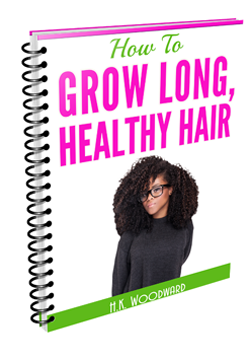
Get your FREE ebook on How To Grow Long, Healthy Natural Kinky or Curly Hair. You might also like: Ref:
That vegetable butter you choose to use on your hair depends on what you want to use the butter for: Hot oil treatments & pre-Shampoo treatments Use nutrient rich oils that can penetrate the hair follicle. Any vegetable butter will be very penetrating because butters (or solid oils) are very low in polyunsaturated fats. However murumuru butter or coconut oil would be especially penetrating because saturated fats are a bit better able to penetrate the cuticle than monounsaturated fats. Top 3: aloe butter (it's a blend of coconut oil and aloe juice so you get the best of both), murumuru butter, avocado butter.
Scalp massage to stimulate growth or to relieve dryness Use oils with a high nutrient content to nourish the scalp and a lower density to avoid clogging the scalp. Using oils with a similar structure to sebum is an added bonus. Top 3: aloe butter, murumuru butter, shea butter. 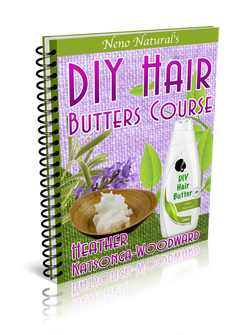
Sealing In Moisture
I think any butter should be good for this function. Top 3: shea, cocoa, mango. That said, liquid oils have more polyunsaturated fats so they are better sealants of moisture overall. The only exception here is jojoba (its' very low in non-penetrating polyunsaturated fats) but it isn't actually an oil, it is a wax so we can't directly compare it to liquid oils. If you have thin hair, avoid the harder butters: cocoa, kokum and sal. When you make hair butters for yourself use a softer blend with a little more oil and little less butter and wax so it doesn’t weigh your strands down. Stepping back from the science for a moment: buy a few butters. Make whipped hair butters with your chosen oils and butters and try them all out to decide which ones you want to keep buying. You can also use all the butters to make body butters, or skin lotions. You may find that the oils you don’t like on your hair are loved by your skin.
|
I now blog about wealth creation - so if you have any money questions meet me there, you can do all sorts of cool things like leave me a voicemail.
By Heather Katsonga-Woodward
I was a natural hair blogger and mixtress living between London & Chicago from 2012 to 2017. I always thought I was 4C but some say 4B; images below - you decide! Heather xx Categories
All
Archives
November 2016
|


